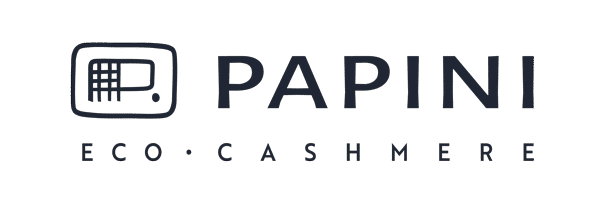Regenerated Cashmere: everything you need to know
Cashmere is, by far, the best natural fiber that you can possibly wear. Given its limited production and high demand, it has long been considered a noble, luxury yarn. Cashmere is a natural fiber obtained from the undercoat of the Hircus goat, native to the Kashmir region. Its alpine climate and wide temperature range help create this special fiber, unique to its environment.
Cashmere’s uniqueness is, in fact, indisputable. It is an isothermal fiber which regulates body temperature to external temperatures, keeping you warm in the winter and cool under the sun. It is a breathable fabric, hypoallergenic and wicks away moisture. It is absolutely the most perfect fiber to come in contact with your skin.
The Kashmir region alone can produce only a very limited amount of fiber, as it takes the entire fleece of one baby goat to produce 100/200 gr. of virgin cashmere. As the market value goes up, herd sizes have increased to meet high demand, consequently diminishing available natural resources and causing detrimental environmental impact. This type of production is clearly unsustainable.
What is Regenerated Cashmere?
Regenerated, or recycled, cashmere is made by regenerating cashmere fibers. It is a process that originated in the city of Prato (Tuscan region of Italy) and has developed over the past century, following the principles of circular economy.
As author Curzio Malaparte wrote in Maledetti Toscani,
“Tutto il mondo finisce a Prato in stracci e da Prato riprende vita (All the world’s rags end up in Prato so that Prato may bring them back to life).”
In fact, at Papini Cashmere we are committed to buying and regenerating cashmere clothing from which we recover raw material. Pre-consumer factory waste (fiber waste generated during the spinning process) and post-consumer garments that have been discarded are sorted by color, generating countless scraps in 100% cashmere.
The material then goes through an additional handmade sorting to remove impurities that are not 100% cashmere. The scraps are brought to fraying, reducing them into small pieces which are then carded, resulting in a cashmere fleece. The regenerated fiber is then twisted and reinforced until it is transformed into new yarns of pure, regenerated cashmere that we at Papini Cashmere like to call Eco Cashmere.
The benefits of Eco Cashmere are numerous: waste reduction, limited consumption of virgin materials, reduction of CO2 emissions, conserving natural resources and, as regenerated cashmere has already been dyed in its previous life cycle, reducing or eliminating the use of chemicals such as dyes and fixing agents.
Papini Regenerated Cashmere
Since our inception, Papini Cashmere’s goal has been to work exclusively with recycled materials. We create eco-friendly, regenerated products that put quality before profit and reflect the community’s shift toward environmental awareness and sustainability.
Generally speaking, it is possible to make 100% regenerated cashmere yarn completely from recycled materials. However, due to the difficulty of the spinning process (compared to when working with virgin cashmere fibers), this will typically produce a low quality yarn that compromises durability, fabric structure, etc., creating garments that generate pilling and lack softness.
Papini Cashmere strives to make environmentally sustainable knitwear that is truly high quality. In order to maintain this standard, we structure our yarns blending regenerated cashmere with new fibers, giving strength and resistance and creating a more suitable yarn. This not only allows us to provide a wide range of knitwear, but more importantly, it gives us the ability to produce garments using single ply yarn, impossible to do with low quality regenerated yarns.
In keeping with our philosophy of sustainability, it is important to avoid dyeing whenever possible. The color process is particularly complex when working with regenerated materials, as some colors are difficult to reproduce. Virgin fibers tend to give off a yellowish color; when incorporated with regenerated fibers, the colors created do not always meet market demands. This is where our workmanship comes into play.
For example, to make our gray requires several steps. Blending regenerated gray with virgin fibers and stopping there would result in a dull, almost yellowish gray. To eliminate this yellow, we add 3% purple, a color that absorbs yellow. This purple is sourced from unused, pre-consumer fiber waste from the spinning process which is then regenerated, carded and spun into yarn of superior quality.
In short, at the base of Papini Cashmere environmentally sustainable knitwear is high quality, soft and durable 100% cashmere yarn. This is why we believe that simply calling our cashmere “regenerated” is limiting. Our Eco Cashmere holds its own identity representing our quality, our respect for the environment and all that encompasses the artisanal tradition of Made in Italy.

